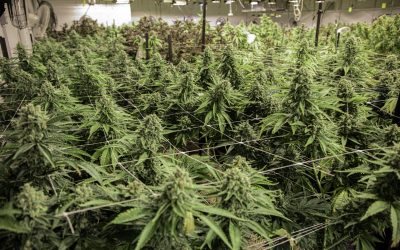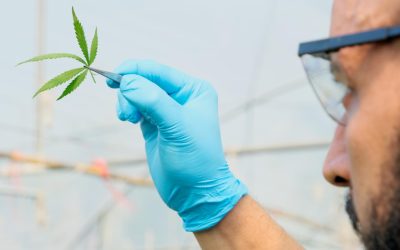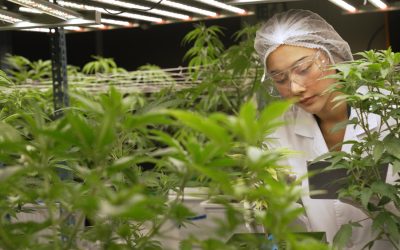The Latest Advances in Medical Cannabis in France – Opinion by Charles S. Messal
France is moving toward a regulatory framework for medical cannabis in France. Charles S. Messal explains why education and science will be decisive. What are the latest advances of the medicinal cannabis sector in France? France is at a turning point for medical...
GMP Cleanrooms in Medical Cannabis: Purity, Safety, and Excellence
What Are Cleanrooms in Medical Cannabis? Cleanrooms also called controlled environments—are high-security, tightly controlled spaces designed to guarantee purity, quality, and excellence in the production of medical cannabis. Their primary function is to minimize...
How to Use the SCROG Method in Medical Cannabis Cultivation
At Agropharm, our extensive experience in advanced cannabis cultivation has led us to see many producers using the SCROG (Screen of Green) method. This technique stands out for its exceptional ability to maximize yields and enhance canopy efficiency, key factors in...
How to grow medical cannabis in soil: Best practices
At Agropharm, we bring over 20 years of experience in technical horticulture, helping growers master the art of cultivating medical cannabis. Growing cannabis in soil is one of the most effective and natural methods, providing plants with vital nutrients and a...
The hemp plant: from field to construction, a strategic crop with a sustainable future- Mónica Solano
Industrial hemp, experiencing a resurgence after decades of neglect, is a traditional agricultural crop fully integrated into the European Union's Common Agricultural Policy (CAP). This enables farmers who grow registered varieties with less than 0.3% THC to access...
Main types of medicinal cannabis and their applications
Agropharm is a leading expert in horticulture and technical consultancy for high-yield crops. With extensive experience, they provide comprehensive solutions to optimize the cultivation and management of medicinal plants. In this article, we’ll explore how many types...
Cannabis sativa vs indica: Key differences explained
Cannabis sativa vs indica are two primary varieties of the cannabis plant, each with distinct characteristics. At Agropharm, we understand the importance of these differences in optimizing crop cultivation. Sativa tends to grow taller with narrower leaves and offers...
Ideal pH for cannabis: Best soil and water pH levels
The cultivation of cannabis requires meticulous attention to various environmental factors, with pH levels being one of the most critical components. The pH of the soil or nutrient solution directly affects the plant's ability to absorb essential nutrients, which in...
Traceability of Cannabis – Guilherme Galaz Tavares, CEO at Cannabud
How is the traceability and management of the cannabis supply chain evolving, and what does the future look like? Traceability in the cannabis industry has moved from being a compliance checkbox to a central operational pillar. In regulated markets, everything...
Stephen Murphy Co-Founder & CEO Prohibition Partners
What is your opinion about the current status of the cannabis sector in markets like the UK and Germany, considering that you are organising B2B events to connect companies and create synergies for industry and patients in both countries? The cannabis sectors...
10 types of cannabis concentrates and their effects
At Agropharm, with over 20 years of experience in agricultural consulting and project development, we specialize in high-yield crops and are committed to advancing the cannabis sector. As a leading authority in horticulture, we help growers and investors navigate the...
Eliecer López Jiménez Agronomist Engineer, Development Director GreenBe Pharma- Intellectual Property-
What is the importance of intellectual property in the protection of new varieties of cannabis intended for medicinal or industrial use? If I may, I would like to start with a bit of pedagogy and explain some basic principles for the uninitiated: Intellectual...











